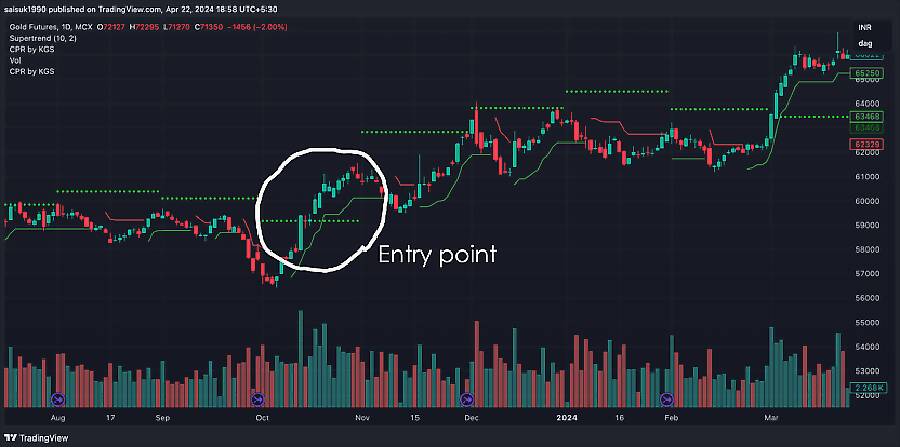
views
Written by M Pandiarajan
For generations, Indians have revered gold as a reliable store of value, and this precious metal has consistently upheld this trustworthiness. Despite equities emerging as a prominent asset class, gold investments have often taken a back seat. Various investment avenues such as mutual funds, portfolio management schemes, or direct investment in multiple companies have made equities the preferred choice for many investors, particularly in recent decades.
Nevertheless, gold has proven to be a formidable contender for equity returns. As illustrated in the chart below, gold has closely tracked equity returns. During periods of turmoil in the equity market, such as in 2020, gold has delivered positive returns, fulfilling its role as a safe-haven asset. Conversely, during sharp upward movements in equity markets, we have observed funds being redirected from gold to equities.

A comparison of gold returns to equity returns over 20 years reveals that gold yielded a return of 11.96 per cent, slightly below the Nifty’s 12.72 per cent. However, gold returned 8.88 per cent in the last decade compared to Nifty’s 12.78 per cent. In a shorter timeframe of five years, gold surged with a return of 16.21 per cent, while Nifty’s returns stood at 13.95 per cent.
The key distinction between the two assets lies in their consistent positive returns, with seldom occurrences of both yielding negative returns simultaneously. During economic upswings, equities tend to deliver robust returns, while in times of uncertainty, gold emerges as the preferred investment avenue.
Ideally, incorporating both asset classes into one’s portfolio would be prudent. However, if an investor must choose between the two, technical analysis can aid in making an informed decision.
Central banks worldwide, led by countries such as Turkey, China, and India, are increasing their gold reserves. The People’s Bank of China has been on a record streak of 17 consecutive months of purchases, establishing itself as the largest buyer among central banks. This trend serves as a hedge against currency depreciation and aims to diversify away from US treasury bonds and the dollar.
China and India are widely known as the top two gold buyers, but China’s gold consumption has reached unprecedented levels. This surge is largely due to the anticipation of China’s Lunar New Year, a peak gifting season that significantly boosts gold demand. The numbers speak for themselves-demand for Chinese gold jewelry rose by 10 per cent, while investments in gold bars and coins increased by 28 per cent over the past year.
It’s a paradox — the US dollar, the global benchmark pricing mechanism for gold, has been strong. In theory, this could make gold more expensive for holders of other currencies, potentially dampening demand. However, the reality is quite different. Gold prices have surged significantly, driven by increased gold purchases by central banks, despite the recent strength of the dollar.
Moreover, geopolitical events often trigger spikes in gold prices due to its reputation as a stable and safe-haven asset. Over the past six months, heightened instability in the Middle East stemming from the Israel-Hamas conflict has prompted many investors to turn to gold as a hedge. The rising instability in the region and early signs of conflict have further solidified gold’s appeal as the preferred choice for investors seeking safety.
How to trade
Regrettably, the gold options market in India lacks sufficient liquidity, necessitating positions in futures to convey our outlook on gold. If you anticipate an increase in gold prices, you can sell gold futures; conversely, you can do the same if you predict a decline. Rather than relying on predictions, adhering to a robust set of predefined standards can enhance the likelihood of profitability in the market.
Markets possess inherent complexity, yet simple strategies often yield optimal results. Trend-following strategies prove effective for ensuring optimal entry into trades. However, mean-reversal strategies can also be applied for short—to medium-term gains.
Typically, trend-following strategies that are successful in equity markets should also be applicable to gold. Let’s explore a straightforward long strategy that enhances the probability of profitability in gold and silver.
We utilize daily closing prices of gold and silver in the MCX exchange along with two indicators.
Super trend
Pivot points Regular (monthly pivot)

Entry condition – Daily closing price closes above the super trend and pivot point R1
Exit condition – Daily closing price crosses below super trend
Using the above stated conditions, we back tested this strategy for the timeframe starting January 2023 to Apr 2024 which produced the following results:
Profit made on gold futures – Rs 12,30,300
Profit made on silver futures – Rs 4,09,200
The above stated results were achieved with this margin requirements:
Gold one mega lot – 7 Lakhs; Silver one mega lot – 4 Lakhs
Conclusion
The strategy guarantees participation in trades during market trends while also increasing the likelihood of staying out of the market during periods of stagnation or correction.
Although numerous deployment strategies are available, it is advisable to conduct thorough backtesting over an extended duration before committing capital.
(The author is chief executive officer of Quantman)




















Comments
0 comment